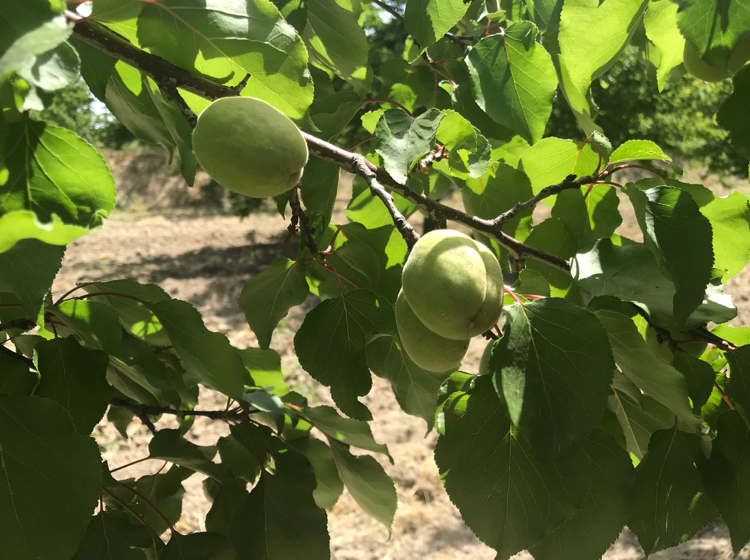Conclusion
As many of you will be skipping to the meat in the sandwich, here it is – we believe the 2019 crop as currently on the trees is 110,000 tons, with a carryover of 15,000 tons, the total available will be around 125,000 tons which is almost identical to 2018 and 2017 total supply. Quality so far is excellent.
2019 Crop Survey
As always we surveyed over 100 orchards in all major growing regions. The overall impression is of a light blossom set as a result of frosts and heavy rain during the bloom in most areas. Notable exceptions are:
- Darende Tohma valley which has a heavy set
- West Akcadag all the way to Dogansehir where the crop has failed completely.
- Lakeside orchards below 850 meters elevation from Baskil through Kale and Eski Malatya which have a moderate blossom set.
- Hekiman, Sarikiz to Kuluncak above 1250 meters there is little to no fruit.
In all other areas we experienced light/spotty fruit sets. There are also areas where fruit is still dropping and this may reduce the total crop further.
With the exception of Baskil, the Kaba Asi variety was very light or completely without fruit in all areas. Kaba Asi represents about 15% of the crop.
The overall acreage continues to decline as the number of abandoned orchards increases due to erratic returns, and a lack of enthusiasm amongst the younger generations for manual labour.

Clean but sparse 2019 crop
Quality
The fruit on the trees at this stage has almost no blemishes, and due to the light blossom set, sizes will be large, mainly size 1 through 3. If the rain and hail hold off from now on we could get one of the best quality crops in recent memory, though high sugar levels might result in high and stubborn residual SO2 levels.
Demand
Supply and demand are in balance. Domestic and export consumption over the past 2 years have been stable at 110,000 tons per year, leaving 10,000 to 15,000 tons of carryover.
This year supply is identical however due to the weak Lira the opening prices are lower than the past 2 years, and I suspect demand will react positively to the lower prices as it has over the past few months, and that we may see an upward pricing trend develop when exports get underway.
Credit is still tight and relatively expensive in Turkey, and as such smaller packers in particular may have no option but to run short positions this season, which could result in a sharp correction if demand starts to surge. As last year the cheapest prices may well be at the opening.
Natural and Organic
Natural apricots are likely to be significantly less than last year as farmers do not have speckles that they need to camouflage. Given the popularity of natural apricots in the domestic market in particular we are likely to see a premium develop over sulphured this year.
Many organic orchards in the Akcadag to Dogansehir corridor, one of the largest organic growing areas, have been wiped out by frost. We expect organic apricot premiums to widen this year.
The Lira
The direction of the Lira is uncertain, there is still political tension ahead of the re run of the Istanbul municipal elections later in June. There are two schools of thought; that the currency will weaken after the elections as artificial support mechanisms for the currency are no longer needed, on the other hand there are those who think that with 4 years to go until the next elections, with Istanbul behind them the government will take the necessary pain to tighten monitory policy and that this will ultimately strengthen the Lira, and hopefully return the economy to health ahead of the 2023 presidential and parliamentary elections.
Indeed contrary to expectations the lira has strengthened 5.5% over the past month, and is currently trading at 5.85 to the $. Some traders had bet on the Lira weakening, and this move is already causing some embarrassment.
We thank you for your support in 2018, and look foreword to your enquiries for 2019 crop
